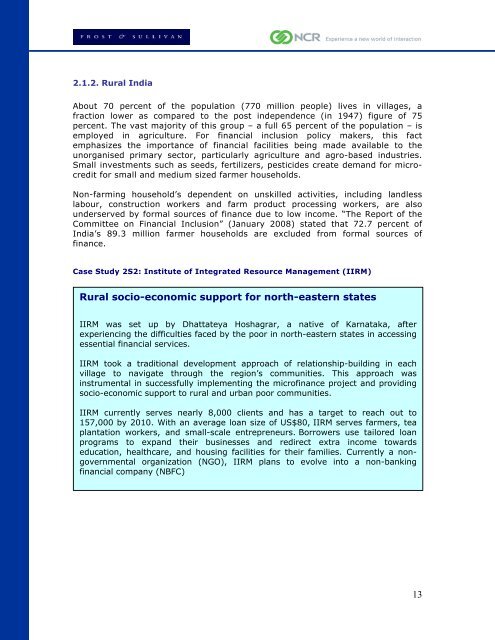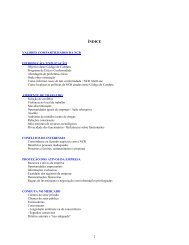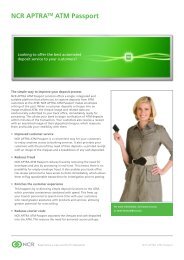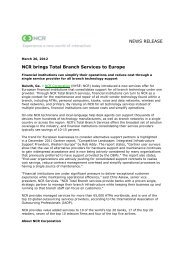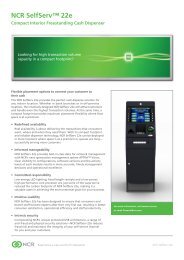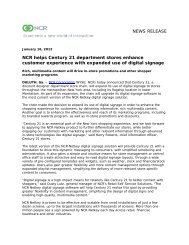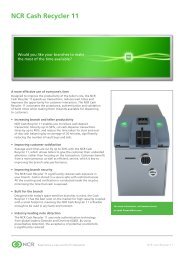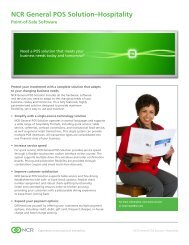Financial Inclusion White Paper - NCR
Financial Inclusion White Paper - NCR
Financial Inclusion White Paper - NCR
You also want an ePaper? Increase the reach of your titles
YUMPU automatically turns print PDFs into web optimized ePapers that Google loves.
2.1.2. Rural India<br />
About 70 percent of the population (770 million people) lives in villages, a<br />
fraction lower as compared to the post independence (in 1947) figure of 75<br />
percent. The vast majority of this group – a full 65 percent of the population – is<br />
employed in agriculture. For financial inclusion policy makers, this fact<br />
emphasizes the importance of financial facilities being made available to the<br />
unorganised primary sector, particularly agriculture and agro-based industries.<br />
Small investments such as seeds, fertilizers, pesticides create demand for microcredit<br />
for small and medium sized farmer households.<br />
Non-farming household’s dependent on unskilled activities, including landless<br />
labour, construction workers and farm product processing workers, are also<br />
underserved by formal sources of finance due to low income. “The Report of the<br />
Committee on <strong>Financial</strong> <strong>Inclusion</strong>” (January 2008) stated that 72.7 percent of<br />
India’s 89.3 million farmer households are excluded from formal sources of<br />
finance.<br />
Case Study 2S2: Institute of Integrated Resource Management (IIRM)<br />
Rural socio-economic support for north-eastern states<br />
IIRM was set up by Dhattateya Hoshagrar, a native of Karnataka, after<br />
experiencing the difficulties faced by the poor in north-eastern states in accessing<br />
essential financial services.<br />
IIRM took a traditional development approach of relationship-building in each<br />
village to navigate through the region’s communities. This approach was<br />
instrumental in successfully implementing the microfinance project and providing<br />
socio-economic support to rural and urban poor communities.<br />
IIRM currently serves nearly 8,000 clients and has a target to reach out to<br />
157,000 by 2010. With an average loan size of US$80, IIRM serves farmers, tea<br />
plantation workers, and small-scale entrepreneurs. Borrowers use tailored loan<br />
programs to expand their businesses and redirect extra income towards<br />
education, healthcare, and housing facilities for their families. Currently a nongovernmental<br />
organization (NGO), IIRM plans to evolve into a non-banking<br />
financial company (NBFC)<br />
13


